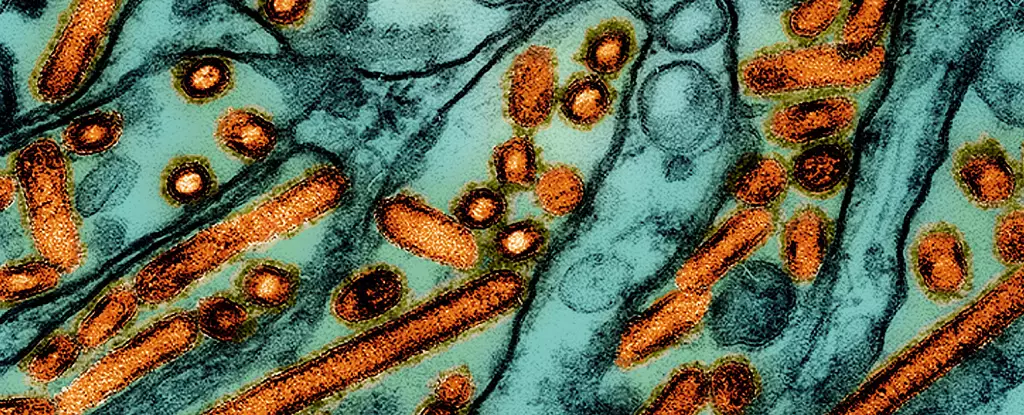In recent weeks, the emergence of avian influenza in the United States has taken a grave turn, punctuated by the hospitalization of an elderly patient in Louisiana—marked as the most severe human case reported in the country to date. According to U.S. health authorities, this case is not merely an isolated incident but part of a worrying trend, as it escalates the cumulative infection count to 61 during the ongoing outbreak. The Louisiana patient, who is over 65 years old and suffering from pre-existing health issues, is reportedly battling severe respiratory illness stemming from the H5N1 strain of the virus. This situation has kindled national concern, particularly considering the more benign cases documented earlier in the outbreak, which had generally been manageable and led to recovery at home.
The incident in Louisiana mirrors alarming reports emerging from various corners of the world, most notably a case in Canada where a teenager faced a severe reaction to the same strain of avian flu. Such instances are underscoring the potential global implications of this virus. Previously, the Centers for Disease Control and Prevention (CDC) noted that H5N1 has historically been associated with high rates of severe illness and mortality in infected individuals, sometimes as high as 50%. These statistics press upon public health officials the urgency for enhanced surveillance and preventative measures as a pandemic scenario becomes increasingly plausible.
The latest findings highlight that the Louisiana patient was likely exposed to sick and deceased birds present in backyard poultry flocks. This reinforces the notion that the risk of avian influenza often proliferates through direct contact with infected animals. The CDC’s identification of the D1.1 genotype of H5N1 in this case signals a specific lineage that has been observed recently in both wild bird populations and poultry throughout the United States. Comparatively, this genotype differs from others that have been associated with milder human illnesses, raising the stakes in assessing the potential for serious health implications from this current outbreak.
Professionals in the field, including scientist Rebecca Christofferson from Louisiana State University, have voiced concerns about the robustness of current surveillance systems, suggesting that undetected spillovers may occur, and vigilance is paramount despite not feeling an immediate sense of panic. Conversely, epidemiologist Meg Schaeffer warns that the convergence of variables indicates that avian flu may soon present itself as a public health crisis on a broader scale.
State-Level Responses: California Takes Action
As fear mounts, states are responding with heightened urgency. California, the nation’s most populous state, has enacted a state of emergency to mobilize resources swiftly in response to the outbreak. Governor Gavin Newsom’s proclamation emphasizes preventative strategies aimed at protecting both public health and the agricultural sector, broadening the monitoring system in the process. The contrast between states further underlines the localized nature of risk and the need for individualized responses to outbreaks, echoing the sentiment that quick government actions are crucial in curbing the spread of infections.
As part of the nation’s preparedness strategy, extensive stockpiles of bird flu vaccines have been maintained to tackle imminent human transmission risks. Recent developments have unveiled promising research in experimental mRNA vaccines, which have shown efficacy in protecting ferrets from infection, instilling hope for future immunization solutions.
Moreover, in response to speculation about raw milk potentially acting as a vector for transmission, the US Department of Agriculture has instituted a federal order mandating transparency in raw milk testing. Specifically, any positive samples for avian flu must be reported to authorities, enabling a more proactive approach toward preventing the propagation of infections.
The Path Forward: Vigilance and Preparedness
As the United States contends with the realities of avian influenza transmission, the narrative emerging from Louisiana and beyond serves as a clarion call for heightened vigilance and proactive public health measures. The unfolding events stress the urgent need not only for immediate response mechanisms but also for a sustainable strategy focused on monitoring, vaccination development, and public awareness to stave off a potentially catastrophic pandemic. With the convergence of scientific advances and urgent public health action, there lies a pathway forward that advocates for preparedness and resilience in the face of evolving viral threats.
While the current state of avian influenza in human populations remains critically serious, the integration of coordinated responses, scientific innovation, and community engagement will be vital to overcoming the challenges presented by this complex public health issue.


Leave a Reply